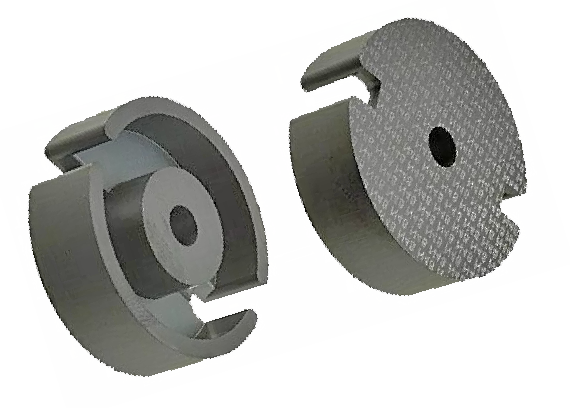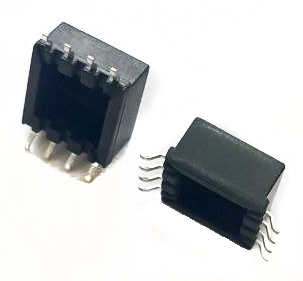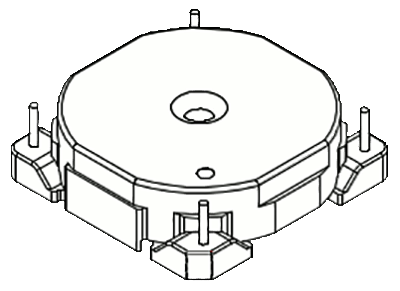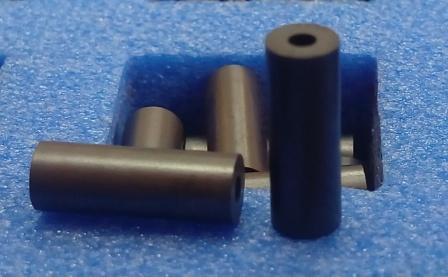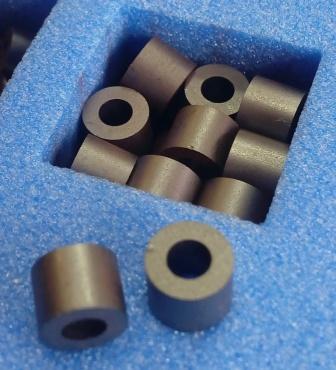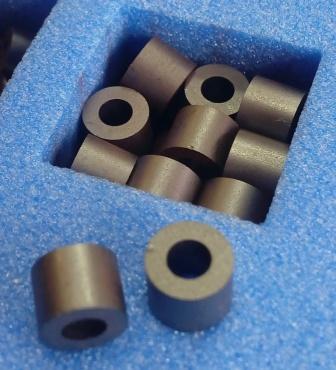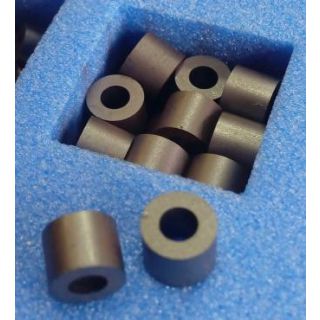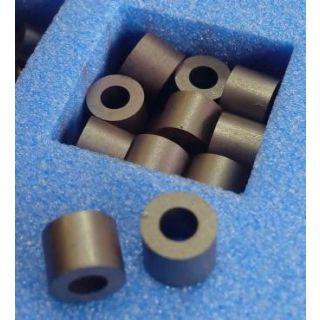
EMC Countermeasures of Low Voltage Differential Signaling Circuits
Introduction
Low Voltage Differential Signaling (LVDS) is one of the most widely used differential transmission systems, popular for its versatility in devices that require high-speed data transmission. As mentioned in another section, external interfaces like USB 2.0, DVI, HDMI, and DisplayPort are used to connect devices. In contrast, LVDS is commonly used as an internal interface for connecting components within devices, such as baseplates. Due to its flexibility, LVDS is employed in various applications across many devices.
This section addresses EMC-related issues that can arise with LVDS, using display devices such as TVs and monitors as examples. Figure 1 illustrates different LVDS configurations for connecting the main baseplate to a display panel. Typically, an LVDS circuit consists of clock and data lines arranged as follows:
LINK = 1 Clock + 5 Data lines.
The transmission rate for each data line is calculated by multiplying the clock frequency by seven. For instance, with a 74 MHz clock frequency, Data Line 1 transmits at 518 Mbps, with a fundamental frequency of 259 MHz. As modern TVs feature higher resolution displays, a single LINK’s transmission capacity may not be sufficient. In such cases, the number of LINKs is increased to two, resulting in a configuration of 1 Clock + 10 Data lines, effectively doubling the number of lines.
EMC Issues Related to LVDS
In LVDS systems, termination is applied with a 100 Ω resistor between the differential lines, ensuring impedance matching for the differential signal. However, the in-phase components are nearly open and get reflected at the terminal end. These reflected in-phase components can travel through the cables connecting the baseplates, potentially causing unwanted radiation. To prevent this, basic noise reduction measures focus on removing in-phase components, which are especially critical for LVDS due to their significant impact. Therefore, understanding the origin and location of in-phase components is key to implementing effective noise countermeasures. In-phase components typically originate from the baseplates and cables, which make up the physical layers (as shown in Figure 2).
Key factors contributing to in-phase components in baseplates and cables include:
a) Phase shifting of S+ / S– at the LVDS driver's output.
b) Variations in the baseplate material (dielectric constant).
c) Wire imbalance.
Cables
Unlike HDMI or DVI, LVDS does not have standardized cable specifications, so various cable types are used, such as FPCs, twin axial cables, and twisted pair cables. Since transmission characteristics differ by cable type, so does waveform quality.
However, the primary factors causing noise radiation remain consistent. Although connection methods between the harness and plug, as well as GND processing, also affect noise radiation, these factors vary by cable type and manufacturer and are not considered here as general factors.
Key factors contributing to cable-related noise radiation include:
d) Imbalance between the differential pair’s + and – lines, or weak electromagnetic coupling between the + and – lines, which can convert differential signals into in-phase components.
e) GND noise from the baseplate being transferred through the cable’s shielding, causing the cable to act as an antenna and become a noise source. When cables are the primary cause of noise radiation, noise countermeasures applied to the baseplate alone may have limited effectiveness, making careful cable selection crucial for noise reduction.
Effective Usage of Common Mode
Common Mode Filters, which are essential components for EMC countermeasures, are highly effective in suppressing in-phase noise radiation caused by factors a), b), and c) on the baseplate (as shown in Figure 3). TDK offers a wide range of Common Mode Filters designed to meet various needs, making it important to choose the right components to enhance the EMC performance of high-speed differential interfaces.
Common Mode Filters should have the following two key characteristics:
- Do not attenuate differential signals.
- Provide a high common mode rejection ratio.
The first characteristic ensures that the filter does not degrade signal quality, which is crucial, particularly when signal loss increases with cable length and panel size. The second characteristic requires a high common mode rejection ratio to effectively suppress noise in the 10 MHz band, which corresponds to low-resolution scenarios, as the LVDS clock signal varies with display resolution.
The relevant parameters for these two characteristics are as follows:
1 → Differential characteristic impedance (LVDS impedance is 100 Ω). 2 → Common mode impedance.
The common mode impedance values can be found in TDK catalogs (see Figure 4). However, differential characteristic impedance is not listed, and for this information, you will need to contact TDK directly. Nevertheless, all TDK Common Mode Filters are designed with differential characteristic impedance in mind, ensuring good signal quality when the recommended filter is used. Figure 5 presents TDK’s lineup of Common Mode Filters for LVDS. The 2012 size filter offers an impedance of 1000 Ω at 100 MHz, while the maximum impedance for the 1210 size filter is 400 Ω. The TCM-L Series, also shown in the figure, was specifically developed for LVDS, and its characteristics will be discussed later.

Figure 3 Points to Consider when Selecting Common Mode


Figure 4 Common Mode Filter Frequency
In addition to electrical performance, size is a crucial factor. LVDS systems contain between 5 and 11 differential lines, including clock lines, meaning that multiple filters may be required depending on the number of lines. Therefore, compact filters are essential. TDK’s lineup includes the industry’s smallest single-component filters (0605 size), as well as array components like 1608 size filters, allowing for a wide range of applications.
Thus far, we have explained the features of Common Mode Filters and TDK’s LVDS Common Mode Filters. Next, we will demonstrate their effectiveness using evaluation results from actual devices. Figure 6 shows waveform measurements for a computer, with a clock frequency of 65 MHz and a data rate of 455 Mbps. The waveform quality was found to be unaffected by the Common Mode Filter. Figure 7 displays the results of noise radiation measurements for the same computer, showing that the filter effectively reduced noise at the peak frequency of 455 MHz.

Figure 5 TDK’s Lineup of Common Mode Filters According to Size

Figure 6 The waveform measurement results for a computer

Figure 7 Effectiveness Examples of Common Mode Filters for Suppressing Radiation Noise (Using Filters with a Common Mode Impedance of 200 Ω)
Common Mode Filters for LVDSFeatures and Effectiveness of the TCM-L Series
While Common Mode Filters (CMFs) are effective in reducing radiation noise from LVDS (Low Voltage Differential Signaling) systems, the increasing size of panels and the lengthening of LVDS cables have introduced new challenges. Two main issues arise with longer cables:
- Impedance mismatches, leading to degraded waveform quality.
- Increased radiation noise due to the extended length of the cables.
In such scenarios, standard Common Mode Filters may not provide sufficient noise suppression. To address these challenges, the TCM-L Series was developed.
These filters are designed to solve the two aforementioned issues by:
- Eliminating reflected signals, thereby improving waveform quality.
- Reducing radiation noise by enhancing differential characteristics and eliminating common-mode noise.
Figure 8 illustrates the improvement in LVDS waveform quality when using TCM-L Series filters. Without a filter, the Eye Diagram reveals high-frequency noise due to signal reflection, distorting the waveform. Standard filters, like the TCM2010-201-4P, did not improve this issue. However, the TCM2010L-201-4P successfully removed these high-frequency reflected components, resulting in a cleaner, wider eye diagram and improved signal quality.
Figure 9 shows the radiation noise measurements. In this test, a 135 MHz clock frequency was used to simulate harsh EMC conditions, with a twin axial cable commonly used for LVDS. Without a filter (Figure 9a), there was a noticeable peak in the harmonic frequencies of the LVDS signal. Using the TCM2010-201-4P filter (Figure 9b) reduced the noise, but peaks still appeared above 500 MHz. When the TCM2010L-201-4P filter was applied (Figure 9c), the peak at 810 MHz was eliminated.
The TCM-L Series filters can remove noise that standard Common Mode Filters cannot address. While harmonic noise at 135 MHz (likely clock noise on the ground line) remained, it can be mitigated using a clamp filter. Overall, this series of filters is effective at frequencies where traditional CMFs fall short, particularly in mitigating cable-related radiation noise.

Figure 8 - TCM-Filters are used: The impedance did not match at the connector and cable for the LVDS line.So the LVDS signal waveform was greatly deformed. At that time, a general Common Mode Filter allowed the deformed waveform to pass, but the TCM-L Series filter was able to reshape the deformed signal. Waveform strain due to impedance mismatching can be reduced, which makes it more effective at reducing noise.

Figure 9 Examples of Radiation Noise Suppression Using TCM-L Series Filters
Conclusion
The features and benefits of Common Mode Filters for LVDS systems have been discussed here, showing that these filters are highly effective at reducing in-phase noise generated by baseplates. Additionally, the TCM-L Series is particularly useful for addressing radiation noise issues related to cables, making them valuable components for noise mitigation. As display resolutions continue to improve, it is anticipated that new interfaces such as DisplayPort and V-by-One may eventually replace LVDS. However, due to LVDS being a well-established and cost-effective technology, it will likely remain a key interface between baseplates. As a result, noise suppression for LVDS systems will remain crucial.
Moreover, with the growing integration of wireless technology in televisions, the demand for the components discussed here is expected to rise. TDK is continuously working to provide solutions for emerging EMC challenges. Please feel free to reach out to TDK for consultation on any of these issues.

